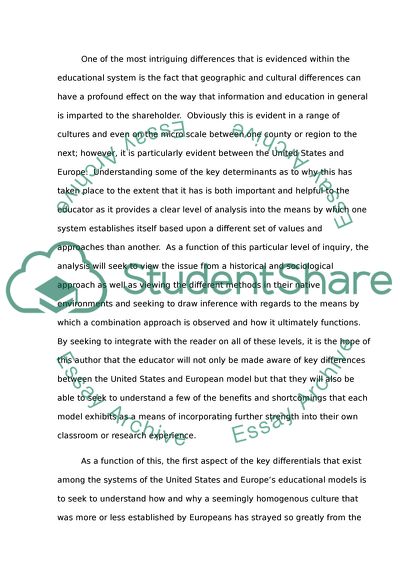Cite this document
(“THE AMERICAN EDUCATION SYSTEM Vs. THE EUROPEAN EDUCATION SYSTEM Pre-K Assignment”, n.d.)
Retrieved from https://studentshare.org/english/1639033-the-american-education-system-vs-the-european-education-system-pre-k-to-12-grade-only
Retrieved from https://studentshare.org/english/1639033-the-american-education-system-vs-the-european-education-system-pre-k-to-12-grade-only
(THE AMERICAN EDUCATION SYSTEM Vs. THE EUROPEAN EDUCATION SYSTEM Pre-K Assignment)
https://studentshare.org/english/1639033-the-american-education-system-vs-the-european-education-system-pre-k-to-12-grade-only.
https://studentshare.org/english/1639033-the-american-education-system-vs-the-european-education-system-pre-k-to-12-grade-only.
“THE AMERICAN EDUCATION SYSTEM Vs. THE EUROPEAN EDUCATION SYSTEM Pre-K Assignment”, n.d. https://studentshare.org/english/1639033-the-american-education-system-vs-the-european-education-system-pre-k-to-12-grade-only.


